
Blog
Fine Jewelry vs Fashion Jewelry: A Strategic Overview for Bulk Buyers
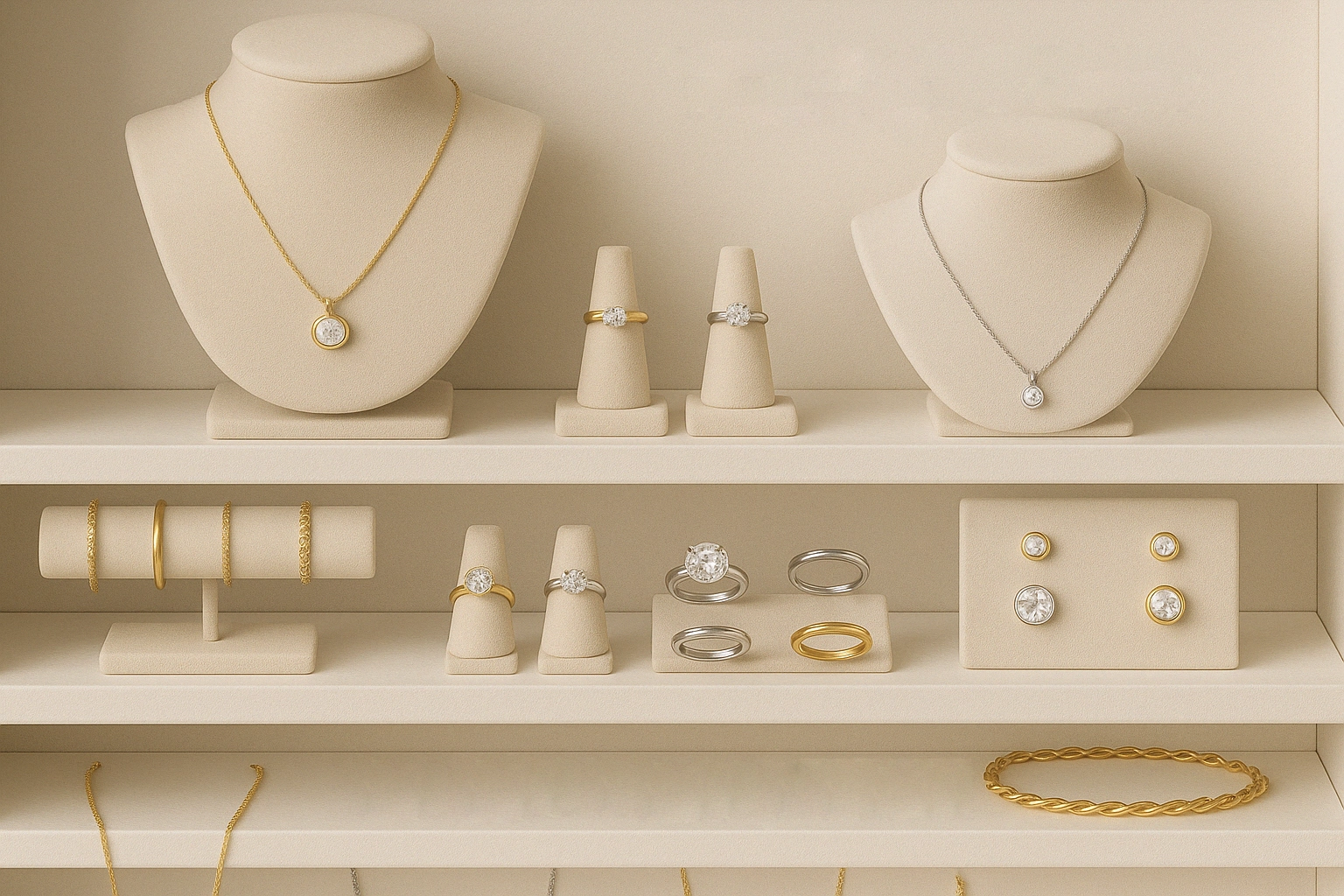
The jewelry market is growing worldwide, driven by evolving consumer tastes and online purchasing behaviors. As you consider adding or expanding your jewelry offerings, it’s crucial to distinguish fine jewelry vs fashion jewelry—a difference that goes beyond mere cost. Indeed, is jewelry an accessory? Absolutely. But the materials, production methods, and branding around jewelry vs fine jewelry can significantly impact how products resonate with your target audience and your bottom line.
1. Is Jewelry an Accessory—or a Category of Its Own?
In the broader retail sense, many ask, “Is jewelry an accessory?” The short answer: Jewelry often stands as its own product category within the fashion ecosystem. While items like belts, hats, or scarves might be considered supplementary accessories, jewelry occupies a unique space, connoting higher perceived value and emotional appeal. Bulk buyers who recognize this distinction can allocate budgets and marketing tactics more strategically.
2. Defining Fine Jewelry vs Fashion Jewelry
For B2B buyers, clarifying jewelry vs fine jewelry is not just about semantics, but about identifying the right supply chain and cost structure.
Fine Jewelry
- Metals & Stones: Often made from precious metals (solid gold, platinum) and real gemstones (diamonds, sapphires).
- Longevity & Value: Retains or increases in value over time; considered an investment by many.
- Target Audience: Upscale consumers, bridal markets, collectors.
- Production Considerations: Requires specialized craftsmanship, hallmark certifications, and potentially higher import duties or insurance.
Fashion Jewelry
- Materials: Commonly uses less expensive metals, such as stainless steel, brass, or alloy. For plating, PVD or electroplating is typical. This answers the frequent query, “What is fashion jewelry made of?”—the short answer is that it often involves cost-friendly metals and synthetic or semi-precious stones.
- Trend Focus: Rapidly evolving designs with lower retail prices. Consumers often purchase multiple pieces to match ongoing fashion trends.
- Production Scale: Typically larger production volumes with tighter margins.
- Wear & Tear: May tarnish faster without proper maintenance or plating thickness.
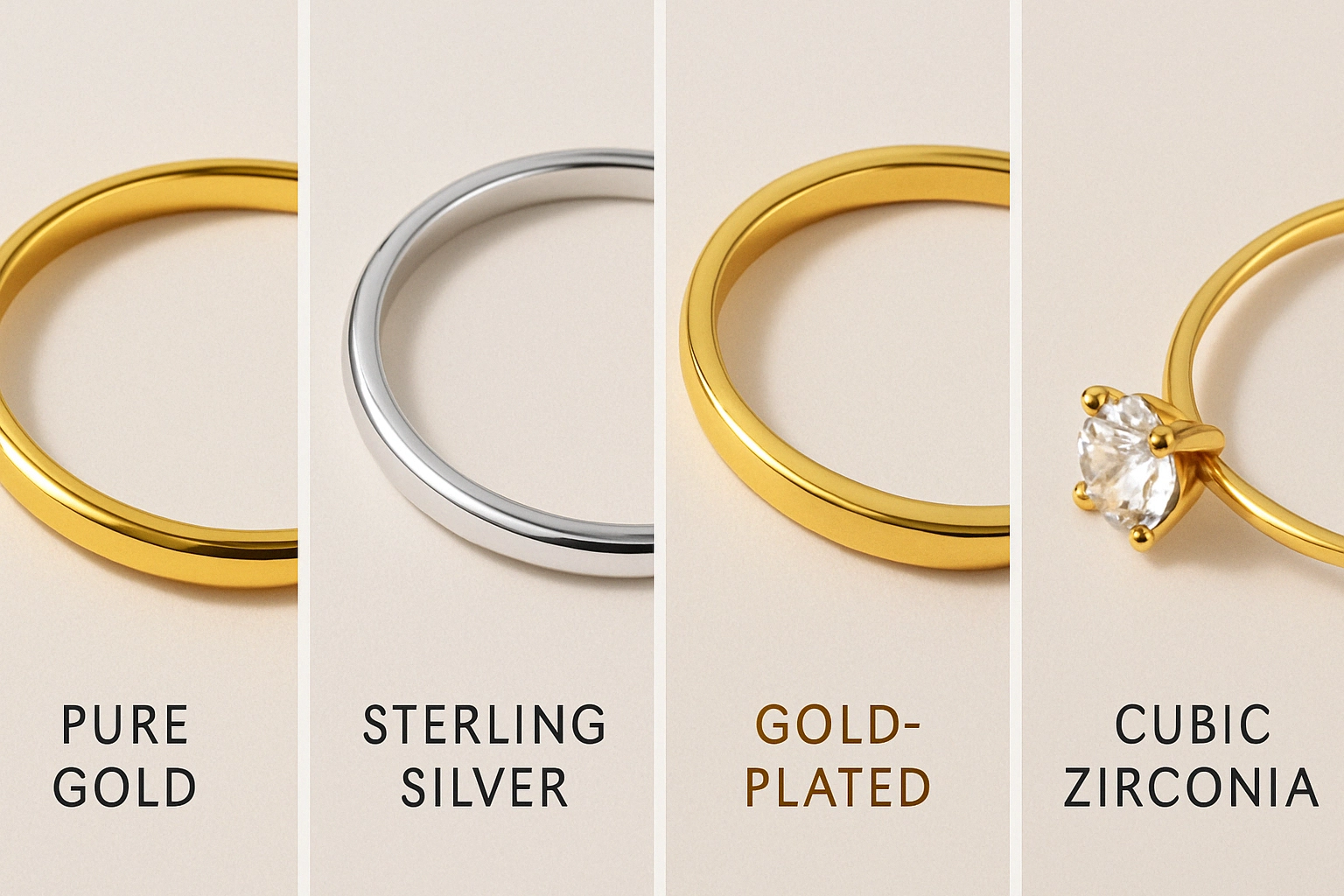
3. The Market Impact of Fine vs Fashion Jewelry
-
Price Points and Margins
- Fine jewelry generally commands higher price tags with potentially larger per-unit profits.
- Fashion jewelry can yield higher volume sales due to more accessible pricing, potentially delivering larger total revenues if managed correctly.
-
Customer Segmentation
- Fine jewelry appeals to shoppers who prioritize prestige, durability, and long-term value.
- Fashion jewelry suits trend-savvy consumers looking for variety and frequent style updates.
-
Brand Image
- Offering fine jewelry can elevate your brand image, associating it with quality and timelessness.
- Fashion jewelry lines allow rapid design refreshes, keeping you on-trend and appealing to younger or budget-conscious segments.
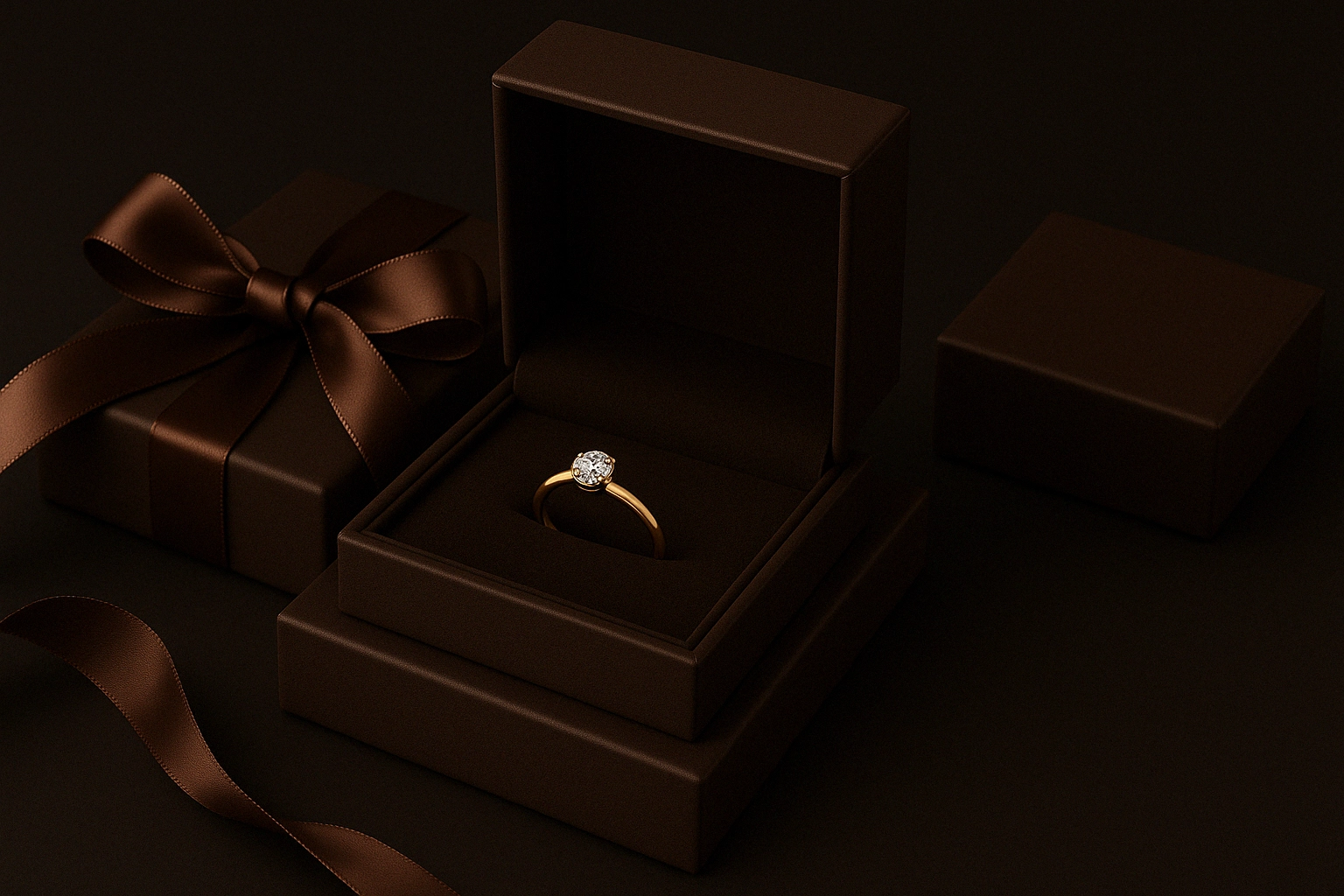
4. Production Differences: Fine vs Fashion Jewelry
| Aspect | Fine Jewelry | Fashion Jewelry |
|---|---|---|
| Metals Used | Solid gold, platinum | Brass, stainless steel, alloy with plating |
| Gemstones | Genuine diamonds, rubies | Glass crystals, cubic zirconia, lab-grown stones |
| Manufacturing | Often hand-finished | Mass production-friendly techniques and quick turnovers |
| Longevity | Decades with proper care | 1–3 years depending on plating and wear |
| Cost Factors | High metal, gemstone cost | Lower-cost materials but potential design complexity |
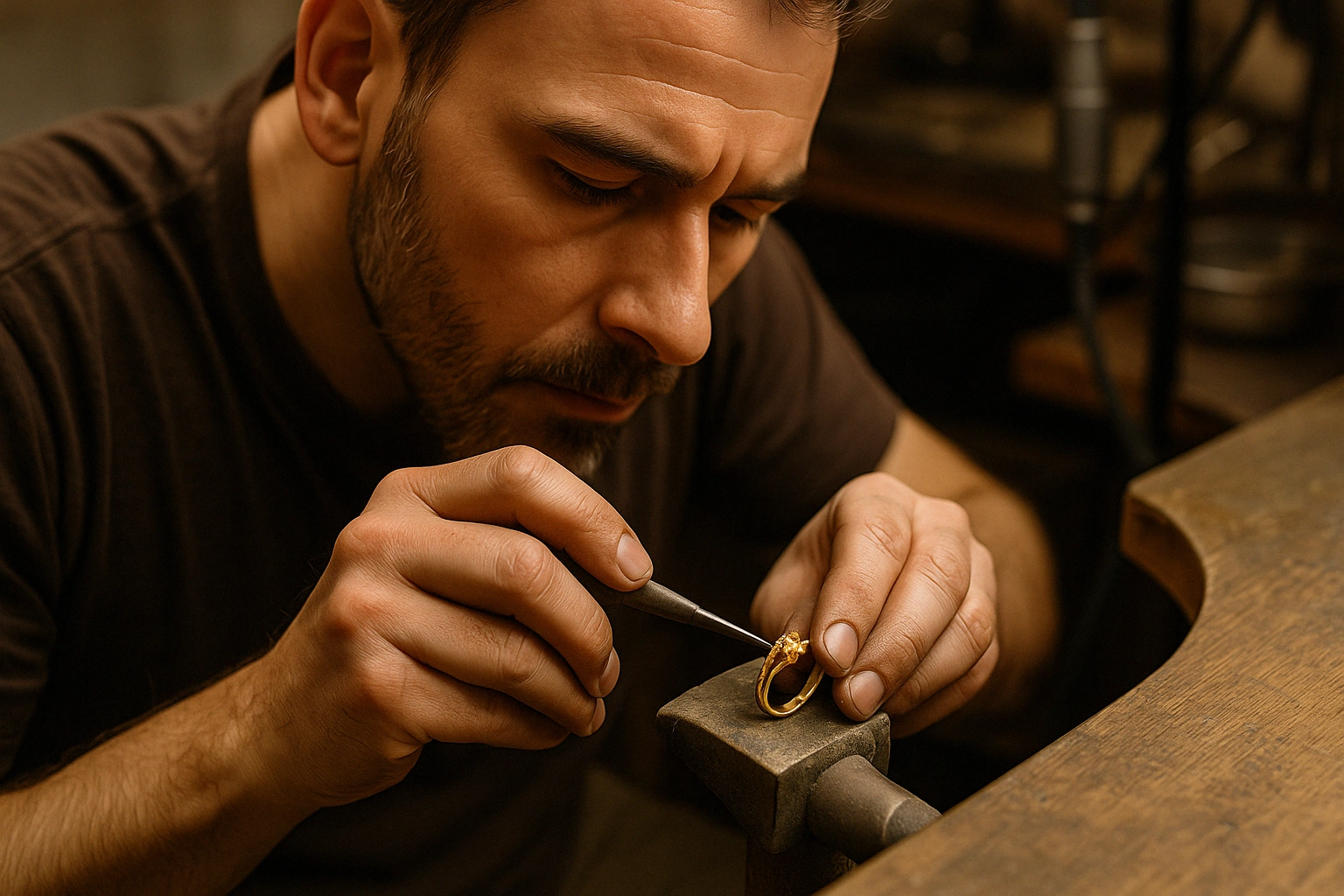
5. Shifts in the Market: Hybrid Approaches
As consumer tastes evolve, a new subset of “bridge jewelry” has emerged—a blend of precious and semi-precious materials or high-quality plating. This middle ground offers better longevity than standard fashion pieces, yet stays more affordable than solid gold. If you’re on the fence about focusing solely on fine vs fashion jewelry, a hybrid approach may capture two audience segments simultaneously.
Examples
- 18k gold vermeil over sterling silver for a luxe but more budget-friendly line.
- Lab-grown gemstones set in stainless steel for reduced cost yet premium aesthetics.
- Modular designs that allow for upgradable components (e.g., base metal band with optional precious stone add-ons).
6. Maximizing Profit in Jewelry vs Fine Jewelry Lines
-
Material Sourcing
- Consolidate raw material purchases (e.g., stainless steel or brass for fashion lines; gold or platinum for fine lines) to lower per-unit costs.
- Partner with certified suppliers offering ethically sourced metals or conflict-free gemstones.
-
OEM/ODM Services
- Customize designs for private-label brands. This is particularly helpful in fine jewelry, where brand exclusivity drives higher perceived value.
- Fashion jewelry can benefit from rapid prototyping for new trend releases, using flexible design platforms.
-
QC & Certifications
- Fine jewelry demands thorough gem appraisal and hallmarking for precious metals.
- Fashion jewelry must meet compliance (e.g., REACH, nickel release) to avoid returns and protect brand reputation.
-
Marketing & Distribution
- Segment your product lines: Fine jewelry for exclusive VIP showrooms or e-commerce “luxury” tabs, fashion jewelry for mainstream retail outlets or fast-fashion partnerships.
- Use data analytics to track sell-through rates, adjusting shipments in real-time to reduce overstock.
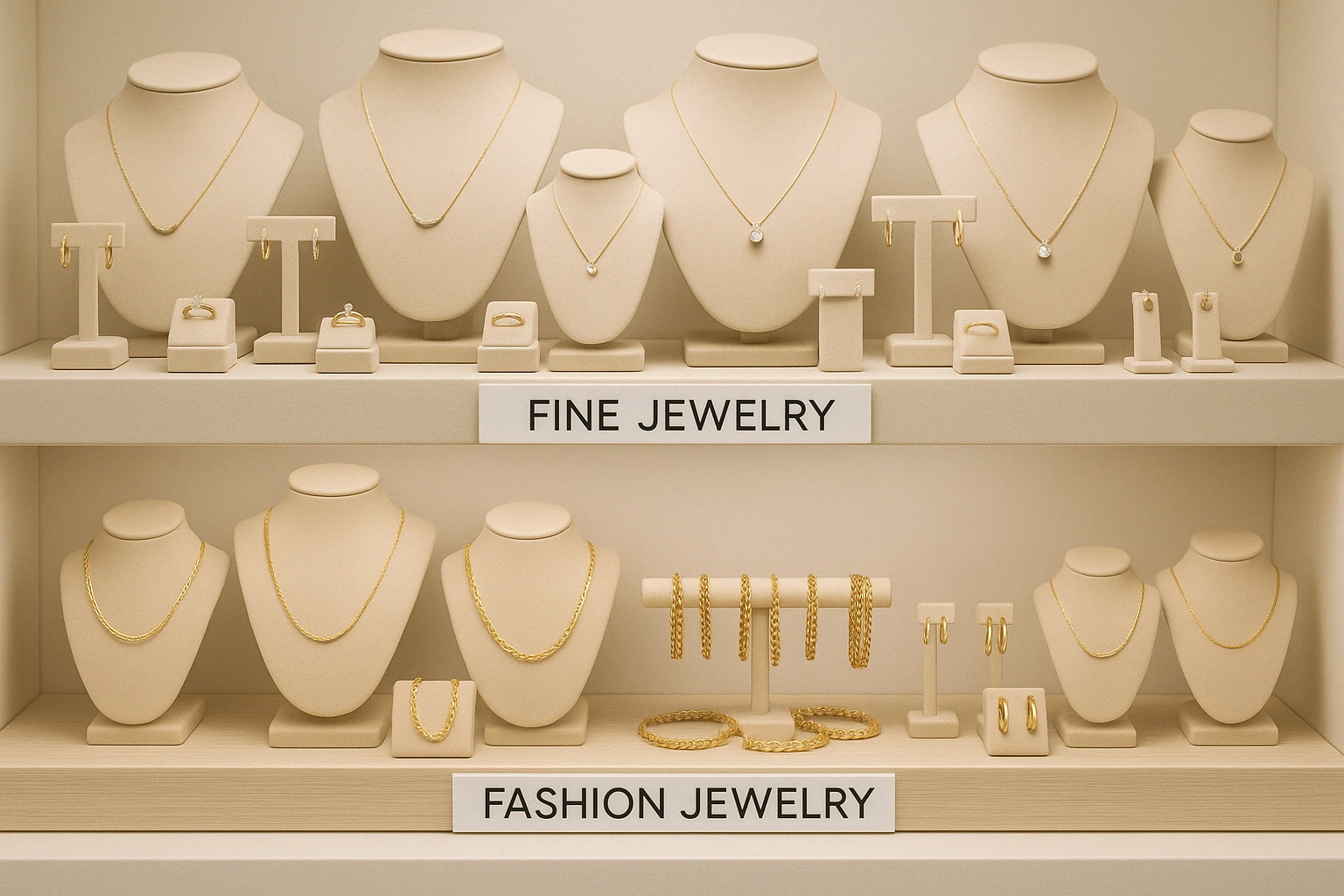
7. Forecast: Where Is the Jewelry Market Headed?
Thanks to global digitization, both fine and fashion jewelry lines continue to experience robust demand. Fine jewelry benefits from increased online discoverability, while fashion brands rely on social media-driven trends. According to recent market studies, fashion jewelry accounts for roughly 60% of unit sales worldwide, though fine jewelry captures a significant share of total revenue due to higher price points. Balancing both categories can fortify a wholesaler’s portfolio against market fluctuations.
Conclusion
Understanding fine jewelry vs fashion jewelry1 extends beyond a material breakdown; it shapes your brand image, cost structure, and overall inventory management. If you’ve been pondering, “Is jewelry an accessory or a separate category?”—the reality is that both fine and fashion lines can anchor your entire product range, each with distinct consumer appeal. Whether you specialize in what is fashion jewelry made of2 or focus exclusively on high-end craftsmanship, choosing the right mix of products can open up new revenue streams.
